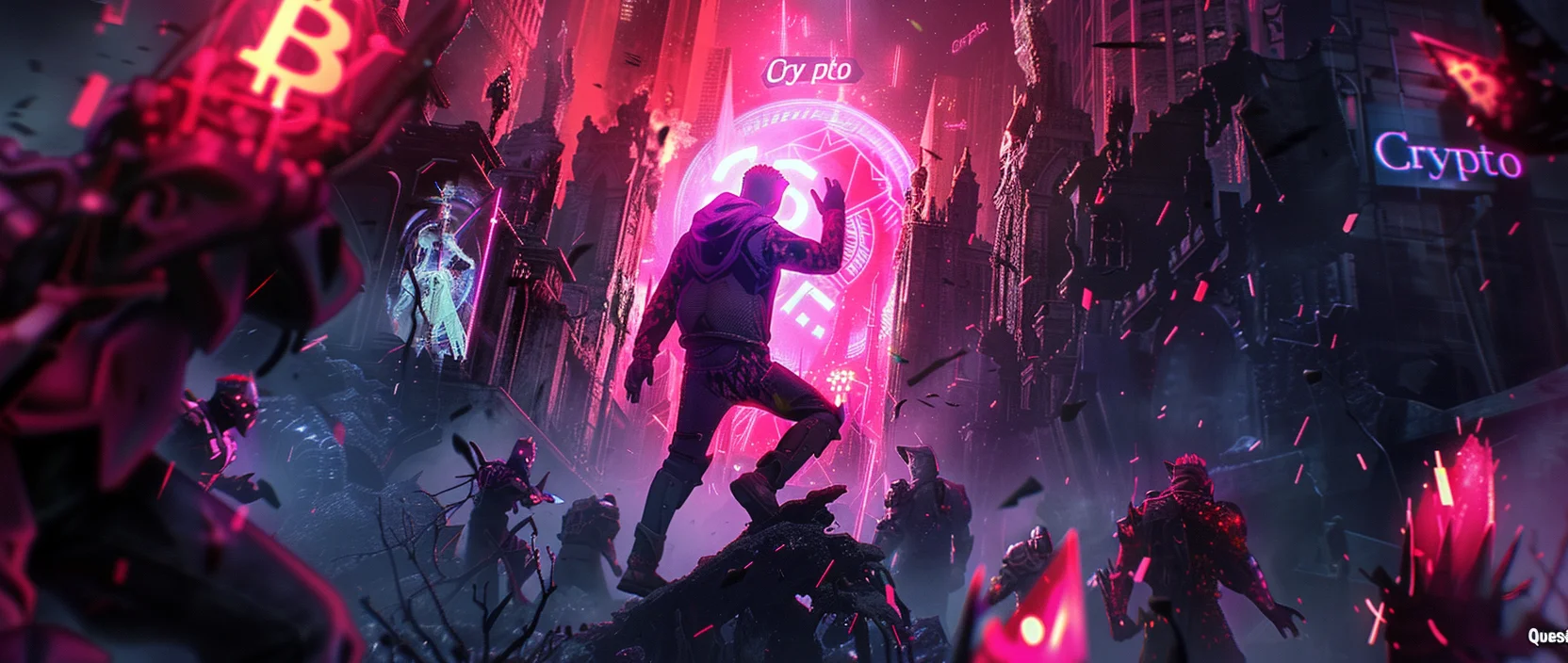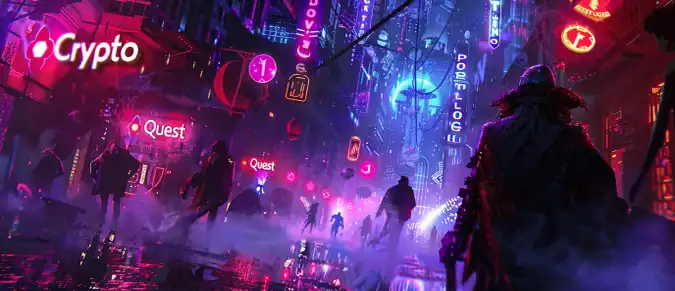In the rapidly evolving world of Web3 gaming, Crypto Quest aims to become a full-fledged ecosystem where gameplay merges with digital economy and asset ownership. This game invites participants not just to play for fun but to influence the economy, earn tokens, and own virtual resources. In this article, we’ll explore the project’s concept, technical foundation, gameplay and player roles, monetization model, and development prospects — all of which help to understand why Crypto Quest stands out in the blockchain gaming landscape.
Contents
- Concept and Philosophy of Crypto Quest
- Technological Platform and Infrastructure
- Gameplay and Player Roles
- Monetization and Tokenomics of Crypto Quest
- Development Prospects and Role in Web3 Gaming

1. Concept and Philosophy of Crypto Quest
Crypto Quest is positioned as a blockchain-based game where the user is not merely a player but an active participant in an economic and social system. The project goes beyond traditional games, offering an open virtual world with asset ownership and meaningful interaction between users.
The game’s philosophy centers around player-driven freedom: every participant defines their own path, builds an economy, buys, sells, and uses assets. There is no predetermined storyline — each user can choose their own strategy and influence the world. This enhances engagement and personal responsibility for every decision.
Moreover, Crypto Quest embodies the “play-to-earn” concept, allowing users to gain real-world value through in-game activities — completing missions, owning NFTs, and contributing to the economy. This model showcases how Web3 gaming transforms entertainment into a sustainable digital ownership experience.
In addition, the project emphasizes social interaction. Players can team up to complete shared missions, participate in competitions, and develop collaborative organizations. Crypto Quest fosters an ecosystem where communication and cooperation are central to the gameplay, helping to create a strong and loyal community — one of the most important factors for long-term success in Web3 gaming.
2. Technological Platform and Infrastructure
Crypto Quest’s infrastructure is built on the Solana blockchain, providing fast transaction processing and low fees — essential for a game with thousands of in-game operations. Every object within the system can be represented as an NFT, giving players true ownership of digital assets verified on the blockchain.
The game architecture integrates server systems, Web3 wallets, and smart contracts that record transactions and ensure transparency. Players can own vehicles, buildings, or business licenses as verifiable blockchain assets. This structure merges traditional gameplay with secure decentralized ownership.
The table below outlines the main technological components and their functions in the Crypto Quest ecosystem:
| Component | Role in the System |
|---|---|
| Blockchain Layer | Records transactions, verifies ownership, and ensures decentralization guarantees |
| Game World Server | Provides gameplay, user interaction, and scalability |
| Smart Contracts | Automate token distribution, reward payouts, and asset operations |
| Web3 and NFT Integration | Connects in-game assets with external markets, wallets, and exchanges |
This robust technological foundation allows Crypto Quest to function not merely as a game, but as a digital ecosystem with real value and ownership. The system also supports cross-chain integration, ensuring compatibility with multiple blockchains. This future-oriented architecture enables seamless interaction between different decentralized worlds, paving the way for an interconnected Web3 gaming universe.
3. Gameplay and Player Roles
In Crypto Quest, players can choose from a range of roles, each offering a unique approach to gameplay and economic participation. The available paths include resource mining, artifact discovery, business management, territorial battles, and teamwork — allowing users to tailor their playstyle to personal goals and strategies.
Typical player roles include:
- Artifact Seeker — explores, completes quests, discovers rare NFTs, and earns rewards.
- Entrepreneur — manages resources, builds infrastructure, and trades within the ecosystem.
- Faction Member or PvP Fighter — competes for territory control and joins alliances.
- Community Leader — interacts with others, creates guilds, and coordinates social gameplay.
The in-game economy is deeply interconnected. Resource gatherers provide materials, entrepreneurs create opportunities, and PvP players secure assets. Such synergy keeps the ecosystem balanced and dynamic, ensuring that every player’s contribution has tangible value. In addition to traditional RPG mechanics, Crypto Quest incorporates real-world economic principles, enabling token-based investments, clan management, and cooperative ventures.
This mix of social and economic depth makes the game more than entertainment — it becomes a virtual economy where strategy, cooperation, and timing define success.

4. Monetization and Tokenomics of Crypto Quest
The economic model of Crypto Quest revolves around its native token and NFTs, connecting in-game activity to real-world value. Players can complete missions, acquire assets, or trade them in the marketplace, turning gameplay into an income stream or long-term investment.
Main monetization channels include:
- Primary NFT sales — unique assets such as buildings, licenses, and rare items.
- Rewards for completing quests and participating in in-game events.
- Player-to-player trading — establishing an internal marketplace.
- Passive income from asset ownership — business shares, territories, or licenses.
The token supply is limited to prevent inflation, ensuring economic stability. DAO integration enables players to influence development and decision-making, promoting fairness and long-term engagement. The team also plans to introduce staking and in-game lending systems, giving players additional ways to earn passive income or support the ecosystem financially.
These mechanics strengthen user involvement and make Crypto Quest a layered, self-sustaining economy. The combination of ownership, governance, and revenue opportunities positions the game as a strong example of how GameFi can evolve into a mature digital economy.
5. Development Prospects and Role in Web3 Gaming
Crypto Quest is among the projects setting new standards for the industry, turning gaming into a blend of social interaction, ownership, and economic participation. Its success could become a benchmark for future developers, illustrating how virtual worlds can unite freedom, cooperation, and financial reward. The team is actively expanding the project, developing mobile and cross-platform versions to attract a broader audience.
Partnerships with other blockchain ecosystems are also underway, aiming to create a network of interconnected metaverses. At the same time, the project is working on implementing decentralized governance through a DAO system, giving players more control over the world’s evolution. Within its metaverse, users will be able to build, manage, and monetize their virtual territories.
If Crypto Quest maintains its balance between player autonomy, economic resilience, and technical reliability, it can become a key figure in the Web3 gaming sphere. The project also carries educational value, introducing users to blockchain fundamentals, tokenization, and decentralized ownership. As a result, Crypto Quest transcends entertainment — it evolves into a platform for learning, digital entrepreneurship, and long-term participation in the Web3 economy.



